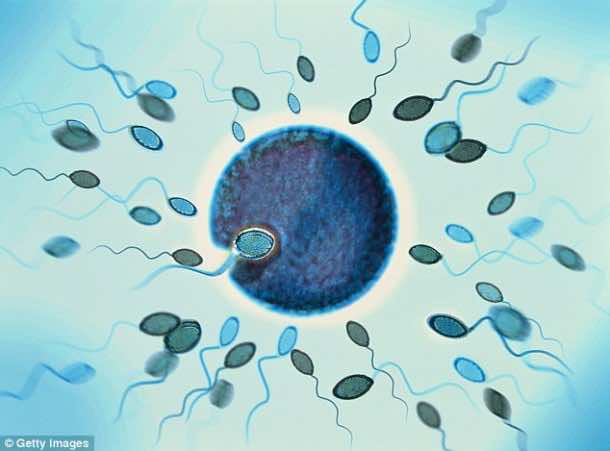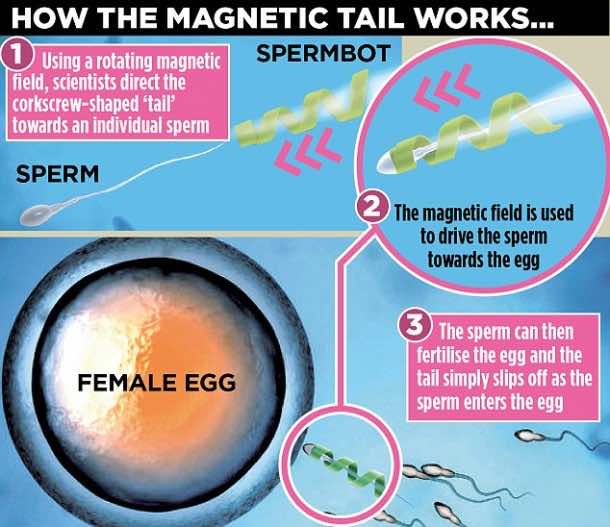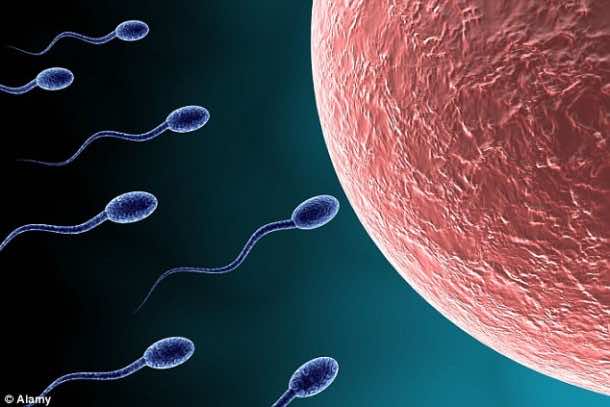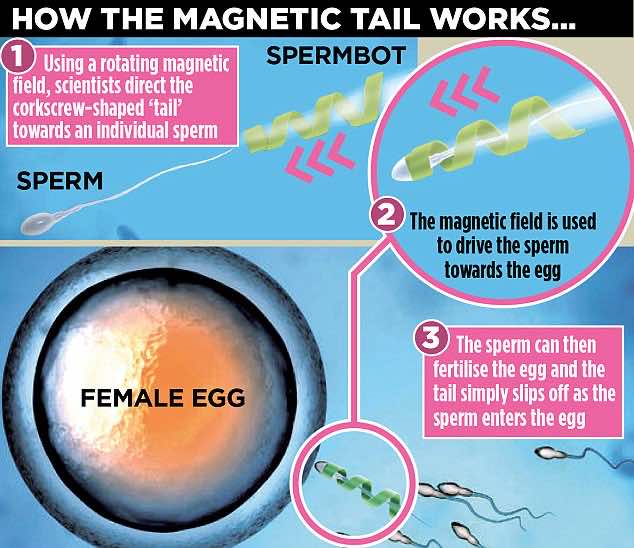Couples who are having problems with conceiving might be able to get some help from small RC ‘spermbots’. Wait, what? Yes, remote controlled sperm-bots that have been created in Germany. A team of scientists is working on imparting a boost to the slow-swimming sperm by installing magnet-powered artificial tails to them. These corkscrew-shaped tails are controllable and can be used for driving the sperm towards the egg.


This bizarre concept works and this has been proved in a lab using cow sperm by scientists in Germany. The team wants to eventually try this with human sperm in the womb. Researcher Lukas Schwarz of the Institute for Integrative Nanosciences in Dresden has explained the working of the motor tails – also known as ‘spermbots’. The tails, called helices, sport a diameter of only four thousands of a millimeter and are wide enough to be fitted around the tail of the sperm, this allows the head freedom of interacting with the egg. The plastic tails are covered in a magnetic metal layer.
Mr. Schwarz said, “The helices will follow the rotation of the external field and thus travel through the surrounding fluid like a corkscrew. Since we can alter the axis of rotation of the external magnetic field, we can also control the direction of moment of the helices. In other words, we can steer them. In our labs, we managed to steer the helices to make them capture sperm cells and transport them to an egg cell.”
The basic idea over here is to increase the chances of conception among couples where the male suffers from low motility. A lot of couples suffering from this opt for ICSI – injection of sperm directly into the egg – that is effective but expensive. Apart from that, the female must also undergo treatment for the extraction of eggs and a procedure for placing the embryo back in place. The leading sperm doctor, Allan Pacey of Sheffield University said, “I’m quite intrigued by what these researchers have done, and although I can’t see its immediate clinical application, I think it’s worth pursuing.”


